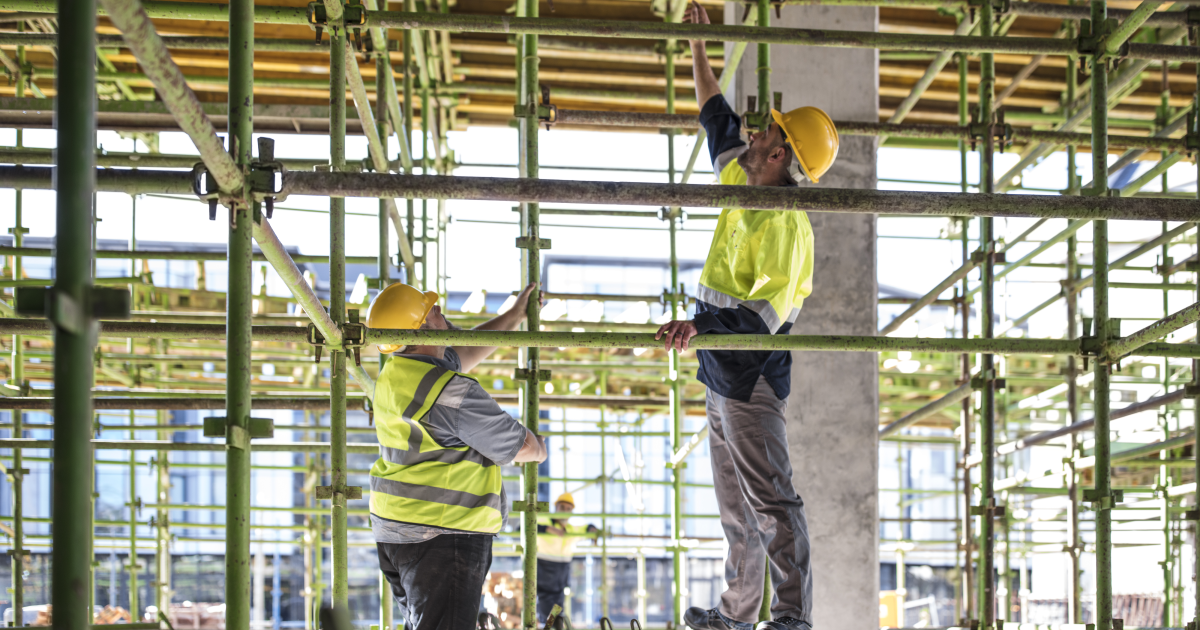eleConstruction sites are among the most hazardous workplaces. While advancements in safety protocols have reduced the number of accidents over the years, the industry still faces numerous safety challenges. Each year, thousands of workers are injured or even killed due to unsafe practices, improper equipment use, or failure to follow safety guidelines. These accidents not only cause physical harm but also lead to legal liabilities and financial losses for companies. These are the top construction safety violations and hazards. For more assistance, work with construction experts through construction management services.
Understanding the most common construction safety violations and hazards is critical to preventing accidents and maintaining a safe work environment. Below, we’ll explore the top safety violations and hazards that frequently occur on construction sites, along with tips on how to avoid them.
Fall Hazards
Falls are one of the leading causes of fatalities in the construction industry. Whether from ladders, scaffolding, roofs, or unprotected edges, falls can result in severe injuries or death. The Occupational Safety and Health Administration (OSHA) consistently ranks falls as the most frequently cited violation in construction.
Causes of fall hazards:
- Inadequate fall protection systems
- Unsecured ladders or scaffolding
- Lack of guardrails or barriers
- Improperly used personal fall arrest systems (PFAS)
Prevention tips:
- Ensure all workers are equipped with proper fall protection gear, such as harnesses and lanyards.
- Install guardrails, safety nets, and covers for holes or open edges.
- Regularly inspect ladders and scaffolding to ensure they are stable and properly secured.
- Train employees on the correct use of fall protection systems and enforce strict adherence to safety protocols.
Scaffolding Violations
Improper scaffolding practices are another common source of accidents on construction sites. Scaffolding collapses or falls can occur when structures are improperly assembled or used. OSHA has strict regulations regarding scaffolding construction, and violating these rules can lead to serious accidents.
Common scaffolding violations:
- Failure to inspect scaffolding before use
- Improperly securing scaffolding to the structure
- Overloading scaffolding beyond its weight capacity
- Inadequate fall protection for workers on scaffolding
Prevention tips:
- Only trained and qualified personnel should assemble and inspect scaffolding.
- Ensure scaffolding is properly secured to a stable structure.
- Follow manufacturer guidelines for weight capacity and never exceed the limit.
- Use guardrails, toe boards, and personal fall protection when working at heights.
Electrical Hazards
These issues are a significant threat on construction sites, especially when workers are exposed to live wires, faulty wiring, or improperly grounded equipment. Electrical injuries, such as shocks, burns, or electrocution, can be fatal or cause lifelong injuries.
Common electrical hazards:
- Contact with overhead power lines
- Improperly grounded or damaged tools and equipment
- Use of extension cords that are frayed or damaged
- Lack of proper lockout/tagout (LOTO) procedures
Prevention tips:
- Keep a safe distance from overhead power lines and de-energize lines if possible.
- Regularly inspect electrical tools and equipment for damage or wear.
- Use ground-fault circuit interrupters (GFCIs) to prevent electrical shocks.
- Implement and follow strict lockout/tagout procedures to ensure equipment is properly de-energized before maintenance.
Hazardous Material Exposure
Construction workers often encounter hazardous materials, including asbestos, lead, silica dust, and chemical substances. Improper handling of these materials can lead to serious health risks such as respiratory issues, cancer, or chemical burns.
Hazards associated with exposure:
- Inhalation of harmful dust or fumes, such as silica or asbestos
- Chemical burns from contact with corrosive substances
- Lead poisoning from old paints or pipes
Prevention tips:
- Provide workers with personal protective equipment (PPE) such as respirators, gloves, and safety goggles.
- Train employees on proper handling, storage, and disposal of hazardous materials.
- Implement engineering controls, such as ventilation systems, to reduce exposure to hazardous dust and fumes.
- Monitor air quality and conduct regular health screenings for workers exposed to hazardous substances.
Improper Use of Ladders
Ladders are essential tools on construction sites, but improper use can lead to falls and serious injuries. Many ladder-related accidents occur due to poor positioning, defective equipment, or failure to follow ladder safety guidelines.
Common ladder violations:
- Using ladders that are too short for the task
- Overreaching or leaning too far while on a ladder
- Using damaged or unstable ladders
- Not securing the ladder properly before climbing
Prevention tips:
- Choose the right ladder for the task, ensuring it’s tall enough to reach the working height without overextending.
- Inspect ladders for damage before each use and remove any defective ladders from the site.
- Always secure ladders on a stable, level surface, and never place them on slippery or uneven ground.
- Maintain three points of contact (two hands and one foot, or two feet and one hand) while climbing ladders.
Struck-by and Caught-in Hazards
Construction sites are bustling environments, and workers can be at risk of being struck by objects or caught in machinery if proper precautions aren’t taken. Struck-by hazards occur when workers are hit by moving vehicles, tools, or falling objects. Caught-in hazards involve workers being caught between objects or machinery, which can lead to crushing injuries or death.
Common causes of struck-by and caught-in hazards:
- Unsecured tools or materials falling from heights
- Heavy machinery operating without proper visibility or safeguards
- Workers standing too close to moving equipment
- Lack of proper machine guarding
Prevention tips:
- Ensure all tools and materials are properly secured, especially when working at heights.
- Wear high-visibility clothing and use spotters to ensure workers are visible to machinery operators.
- Maintain a safe distance from moving equipment and stay within designated walkways.
- Install and regularly inspect machine guards to prevent workers from being caught in machinery.
Trenching and Excavation Hazards
Trenching and excavation work is highly dangerous, with cave-ins being one of the most serious risks. Without proper precautions, trench collapses can occur, trapping or crushing workers.
Common trenching and excavation hazards:
- Lack of protective systems such as trench boxes or shoring
- Working in trenches deeper than five feet without proper safety measures
- Accumulation of water or hazardous gases in trenches
- Failure to inspect trenches for stability before each shift
Prevention tips:
- Use protective systems like trench boxes, shoring, or sloping to prevent cave-ins.
- Never allow workers to enter an unprotected trench deeper than five feet.
- Ensure trenches are inspected daily by a competent person to assess stability and identify potential hazards.
- Keep heavy equipment and materials away from the edges of trenches to prevent collapse.
Inadequate Personal Protective Equipment (PPE)
Personal protective equipment (PPE) is a key element in construction safety, protecting workers from various hazards such as falling objects, sharp tools, and harmful substances. However, PPE is only effective if it is used properly and consistently.
Common PPE violations:
- Failure to wear hard hats, safety glasses, or gloves when required
- Using the wrong type of PPE for the task
- Poorly maintained or damaged PPE
- Lack of training on proper PPE usage
Prevention tips:
- Conduct regular training sessions on the importance and proper use of PPE.
- Provide workers with appropriate PPE for each task, ensuring it meets safety standards.
- Inspect PPE regularly to ensure it’s in good condition and replace any damaged equipment immediately.
- Enforce PPE usage at all times, especially in high-risk areas.
Lack of Training and Communication
A well-trained workforce is one of the most effective ways to prevent accidents on construction sites. Inadequate training and poor communication can lead to dangerous misunderstandings and mistakes. Workers need to be trained not only in their specific tasks but also in recognizing and avoiding potential hazards.
Common training and communication issues:
- Failure to train workers on safety protocols and emergency procedures
- Language barriers that prevent clear communication of safety guidelines
- Lack of regular safety meetings or toolbox talks
- Inadequate signage to warn of specific hazards
Prevention tips:
- Provide comprehensive safety training for all workers, including specific training on job tasks and potential hazards.
- Use clear, multilingual signage to ensure all workers understand safety requirements.
- Hold regular safety meetings to discuss new hazards, review incidents, and reinforce safety protocols.
- Encourage open communication between workers and supervisors regarding safety concerns.
Conclusion
Construction sites are filled with potential hazards, but by understanding and addressing the most common safety violations, you can create a safer work environment. Implementing strong safety protocols, providing proper training, and ensuring consistent use of protective equipment are crucial steps in preventing accidents.
By proactively managing risks and fostering a culture of safety, construction companies can protect their workers, avoid costly accidents, and maintain a reputation for responsible and safe practices. These are the top construction safety violations and hazards. For more assistance, work with construction experts through construction management services.


